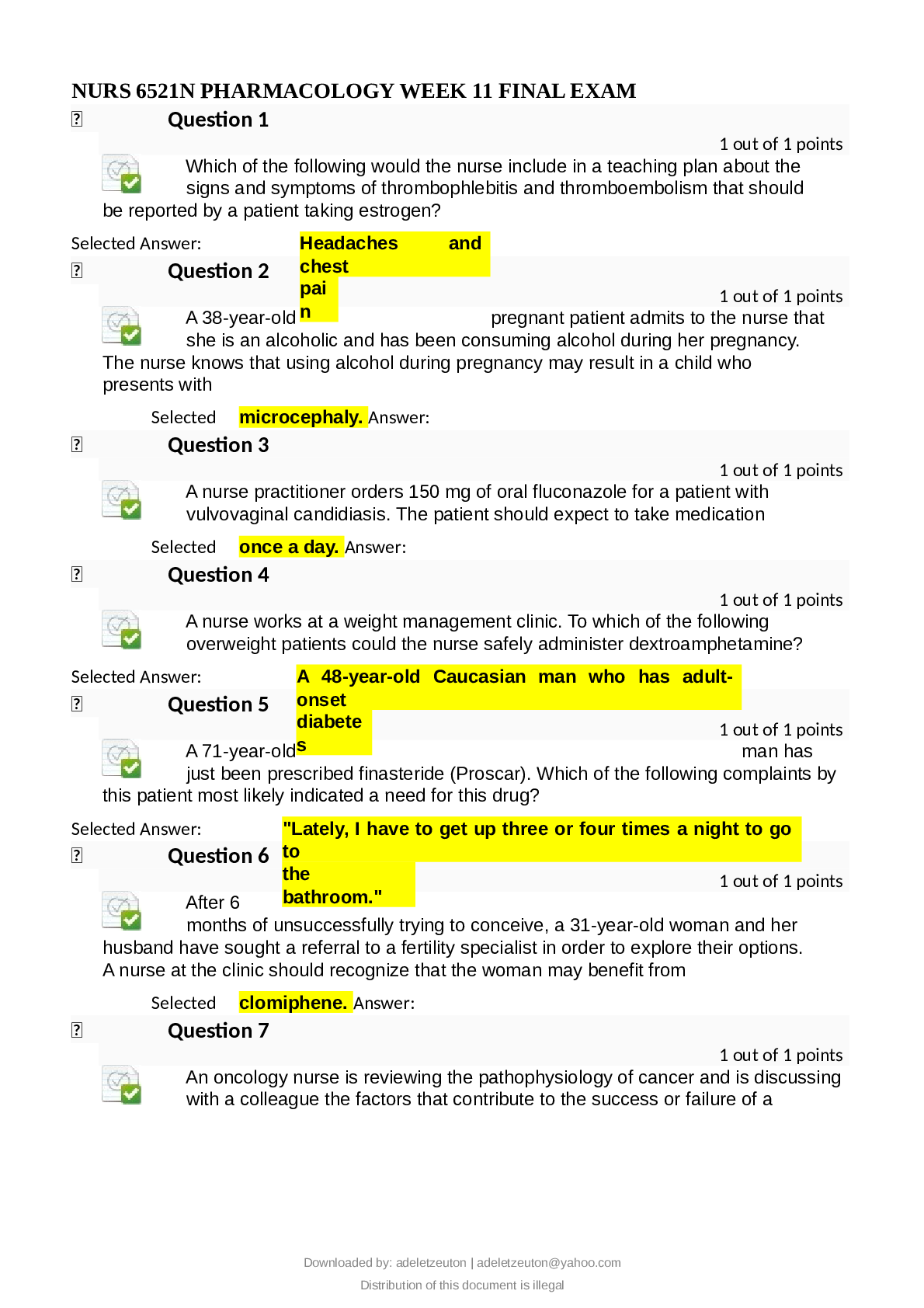Practice Questions and Problems for Chapter 6_Version 2
Document Content and Description Below
__ 1. Consumer surplus is defined as the: a. difference between the willingness to pay for a good and the willingness to sell it. b. total revenue earned from producing and selling some good. c. di... fference between the willingness to pay for a good and the price paid to get it. d. quantity of units that consumers want to buy at the market price. e. difference between the price the seller receives and the willingness to sell it. ____ 2. The difference between the willingness to pay for a good and the amount that is paid to get it is also known as: a. consumer expenditure. b. surplus spending. c. consumer benefit. d. producer profit. e. consumer surplus. ____ 3. All else being held constant, an increase in the price of a good would necessarily: a. increase social welfare. b. decrease producer surplus. c. decrease consumer surplus. d. increase consumer surplus. e. increase the supply of the good. ____ 4. Bob is willing to pay $65 for a new pair of shoes. Bill is willing to pay $50 for the same shoes. The shoes have a price of $45. What is the total consumer surplus for Bob and Bill? a. $15 b. $20 c. $5 d. $25 e. $35 ____ 5. Jamal is willing to pay $85 for a new jacket that sells for $70. Eddie is willing to pay $65 for that same jacket. What is the total consumer surplus for Jamal and Eddie? a. $30 b. $15 c. $20 d. $25 e. $155 ____ 6. Consider the market for socks. The current price of a pair of plain white socks is $5.00. Two consumers, Jeff and Samir, are willing to pay $7.25 and $8.00, respectively, for a pair of plain white socks. Two sock manufacturers are willing to sell plain white socks for as little as $4.00 and $4.15 per pair. How much is total consumer surplus in this market? a. $2.25 b. $3.00 c. $0.75 d. $5.25 e. $15.25 ____ 7. Producer surplus is defined as the: a. difference between the willingness to pay for a good and the willingness to sell it. This study source was downloaded by 100000827141222 from CourseHero.com on 10-30-2021 05:19:43 GMT -05:00 https://www.coursehero.com/file/16952023/Practice-Questions-and-Problems-for-Chapter-6-Version-2/ This study resource was shared via CourseHero.com b. difference between the price the seller receives and the willingness to sell it. c. difference between the willingness to pay for a good and the price paid to get it. d. quantity of units that consumers want to buy at the market price. e. total revenue earned from producing and selling some good. ____ 8. The difference between the willingness to sell a good and the price a producer receives is also known as: a. producer profit. b. producer surplus. c. consumer waste. d. tax revenue. e. producer benefit. ____ 9. All else held constant, a decrease in the price of a good would necessarily: a. increase social welfare. b. decrease producer surplus. c. decrease consumer surplus. d. increase demand for the good. e. increase producer surplus. ____ 10. When the price of a good increases and all else is held constant: a. both consumer surplus and producer surplus decrease. b. both consumer surplus and producer surplus increase. c. consumer surplus decreases. d. producer surplus decreases. e. producer surplus increases. ____ 11. When looking at a supply and demand graph, you would find consumer surplus: a. above the demand curve and below the supply curve. b. below the demand curve and above market price. c. to the right of equilibrium quantity and above market price. d. above the demand curve and above the supply curve. e. below market price and above the supply curve. ____ 12. Explain what happens to the amount of consumer surplus and producer surplus when the supply of scarves suddenly declines (shifts left). a. Producer surplus declines and consumer surplus is unchanged. b. Consumer surplus declines and producer surplus is unchanged. c. Consumer surplus declines and producer surplus declines. d. Consumer surplus is unchanged and producer surplus is unchanged. e. Producer surplus increases and consumer surplus increases. ____ 13. The price–quantity combination found where the supply and demand curves intersect is a unique combination that is efficient because: a. producers can sell as much as they want. b. total surplus is maximized. c. tax revenue is sufficient to pay for government services. d. consumers can buy as much as they want. e. new products are being introduced. [Show More]
Last updated: 2 years ago
Preview 1 out of 9 pages
.png)
Buy this document to get the full access instantly
Instant Download Access after purchase
Buy NowInstant download
We Accept:

Reviews( 0 )
$9.00
Can't find what you want? Try our AI powered Search
Document information
Connected school, study & course
About the document
Uploaded On
Oct 30, 2021
Number of pages
9
Written in
Additional information
This document has been written for:
Uploaded
Oct 30, 2021
Downloads
0
Views
59














